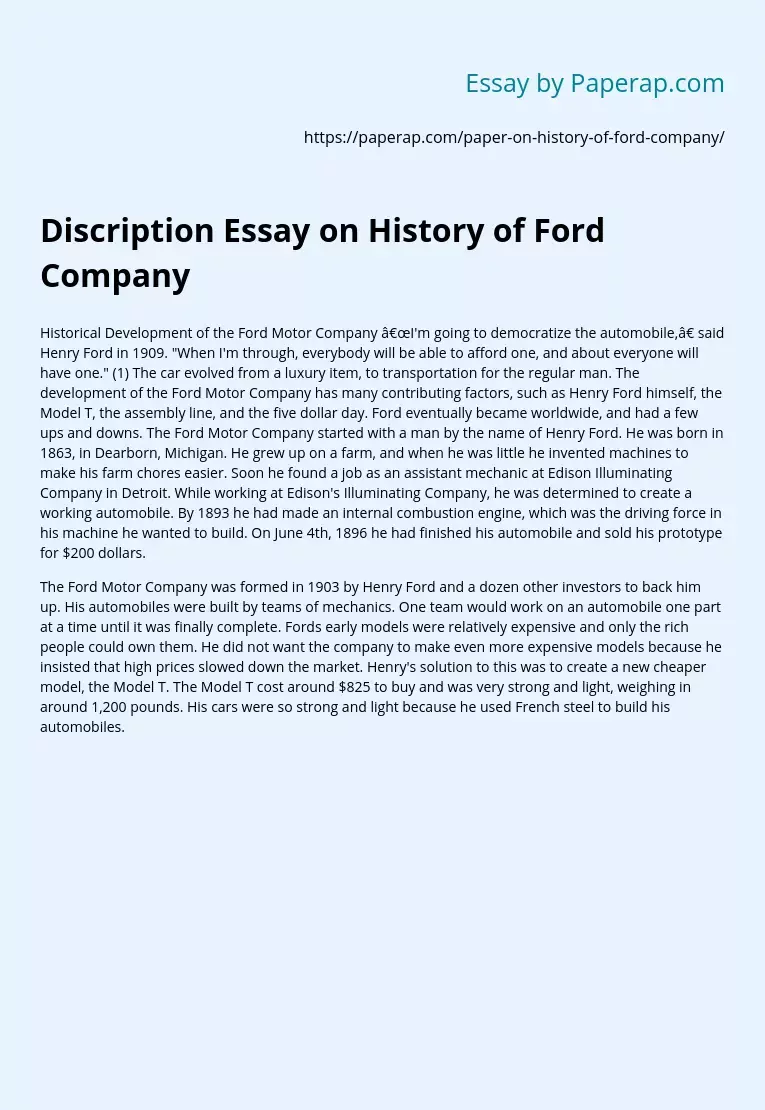Discription Essay on History of Ford Company
Historical Development of the Ford Motor Company “I’m going to democratize the automobile,” said Henry Ford in 1909. “When I’m through, everybody will be able to afford one, and about everyone will have one.” (1) The car evolved from a luxury item, to transportation for the regular man. The development of the Ford Motor Company has many contributing factors, such as Henry Ford himself, the Model T, the assembly line, and the five dollar day. Ford eventually became worldwide, and had a few ups and downs.
The Ford Motor Company started with a man by the name of Henry Ford. He was born in 1863, in Dearborn, Michigan. He grew up on a farm, and when he was little he invented machines to make his farm chores easier. Soon he found a job as an assistant mechanic at Edison Illuminating Company in Detroit. While working at Edison’s Illuminating Company, he was determined to create a working automobile. By 1893 he had made an internal combustion engine, which was the driving force in his machine he wanted to build.
On June 4th, 1896 he had finished his automobile and sold his prototype for $200 dollars.
The Ford Motor Company was formed in 1903 by Henry Ford and a dozen other investors to back him up. His automobiles were built by teams of mechanics. One team would work on an automobile one part at a time until it was finally complete. Fords early models were relatively expensive and only the rich people could own them. He did not want the company to make even more expensive models because he insisted that high prices slowed down the market.
Henry’s solution to this was to create a new cheaper model, the Model T. The Model T cost around $825 to buy and was very strong and light, weighing in around 1,200 pounds. His cars were so strong and light because he used French steel to build his automobiles.
Discription Essay on History of Ford Company. (2019, Oct 09). Retrieved from https://paperap.com/paper-on-history-of-ford-company/

